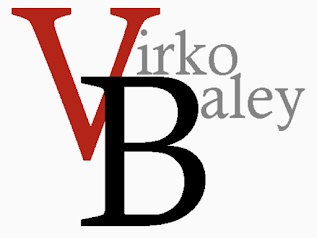Concerto No. 1 for Violin and Orchestra, quasi una fantasia (1987)
Commissioned by Dr. W. Howard Hoffman, and dedicated to the memory of his father, W. Howard Hoffman, senior.
I. Lacrymosa
II. Dies irae
III. Lux aeterna
IV. Agon
The idea of the concerto is that of a requiem mass, a reflection on death. The first three movements are in sonata-allegro form, spread throughout those movements. The Lacrymosa is the exposition, Dies irae the development and Lux aeterna the recapitulation. Although each movement is different, certain relationships exist between them. For example, movements II and III mirror each other - darkness into light, anger into acceptance and chaos into order - but are still colored by a pervasive feeling of loss. The fourth movement (the coda) is a wake; it is a joyful remembrance of a life well-lived and well remembered. The other element that pervades the work as a whole is its "Ukrainianism". The melos of Ukrainian folk music is evident in the intervallic and rhythmic structure of the concerto. For some time I've wanted to write a work in which the building blocks would be melismas based on folk figures (authentic and/or facsimiles). The inspiration to act on this came out of hearing Leonid Hrabovsky's "Concerto misterioso" for nine instruments (1977). It is a work I admire very much and one in which is found a very original solution to the problem of abstract (non-nationalistic and non-narrative) use of ethnographic materials.
The Lacrymosa comprises a set of thirteen verses, the overall character of which is that of a lament (as the title suggests). Each verse is separated by a ritornello - a chant or "alleluia" of sorts. For most of the movement, the chant is distinct and different from the solo lament of the violin. Yet near the end, both are joined, leading the movement attacca into the Dies Irae.
The Dies Irae is in five parts: A B1 B2 C A . In it are developed the emotional, although not necessarily structural, motives first heard in the Lacrymosa. But the Dies Irae is full of fury: the opening drumbeats (heartbeats amplified) are overlaid by screams of anguish. The violin entrance is a toccata. The orchestra follows the violin, at times scrambling to keep up; there is ritualistic raising of hands, elegiac gestures, and then the drums return. The work ends with the opening repeated. This movement makes use of materials from two earlier works: the "etude" section from the first movement of "Partita No. 1 for Three Trombones and Three Pianos" (1970; 1976) and the fourth movement from "...figments" (1981) for solo violin. The reuse of older material in a different context is one that has always fascinated me and is historically a common practice (since at least the time of J.S. Bach). The principal interval employed in the movement is that of a tritone -- D to A-flat. This interval is picked up in Lux Aeterna and eventually resolved.
The Lux Aeterna is a hymn for the solo violin and thirteen players. It is the pacification of Dies Irae, an epiphany, a smile wiping the tears away. The tritone (now D to G-sharp) moves gradually into the area of resolution as it shifts into a pure fourth, one of the primary "perfect" consonant intervals.
The Agon is a wake, a reaffirmation of life inspired by the wake in the book (and film) "Shadows of Forgotten Ancestors". It is in this movement that a patchwork of "tunes" is formed, creating a lamination of various abstract dances that occur simultaneously as a result of canonic chasing.
For this concerto, the orchestra is divided into 2 groups: concertino (a small group) and tutti (the full orchestra). The soloist is both the leader and the connecting link between the two groups. The work was written for the wonderful violinist Yuri Mazurkevich. This Concerto is available in two versions, for full orchestra or chamber ensemble.



